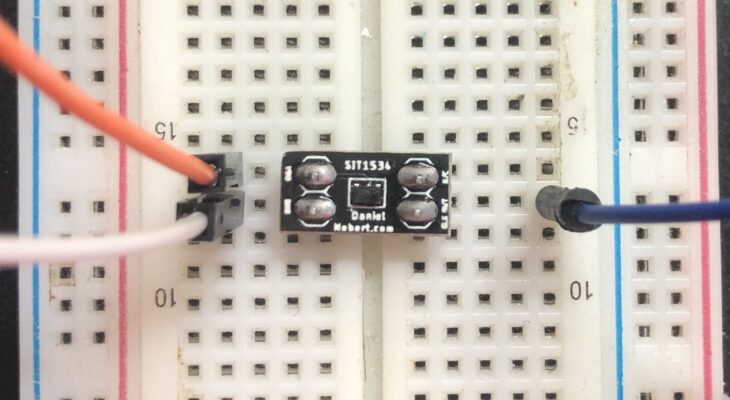Some projects require a oscillator for a carrier wave for a modulated signal, digital clock line, or timekeeping. Typically, computer use quartz crystal XTAL oscillators to drive a clock, but their accuracy isn’t always the best due to temperature. For most applications, this isn’t an issue, but for those that require this to be as accurate as possible, over time, that inaccuracy adds up. Sorry to quote Wikipedia but, a clock built using a regular 32 kHz tuning-fork crystal keeps good time at room temperature, but loses 2 minutes per year at 10 °C above or below room temperature and loses 8 minutes per year at 20 °C above or below room temperature due to the quartz crystal.
Intro the SiT1534, Ultra-Small, Ultra-Low Power 1 Hz Programmable Oscillator. Pre-programmed from the factory, with frequencies ranging from 1 Hz – 32.768 kHz, this particular integrated circuit is 1 Hz.
Taking a look at the temperature vs. frequency stability of the SIT1534 compared to a Quartz XTAL, you’ll see this integrated circuit is fit to operate at extreme temperatures.

And is, very, very small.

Clearly this isn’t something the old soldering iron is going to be a able to do, so I’ll need to use a hot air gun with solder paste applied using a stencil.

After a bit of low air flow to heat up the board, I was able to get the solder to reflow.

All that was left was to scope out the clock output to make sure we had a 1 Hz square wave.

Practical uses I can find for this would be triggering external interrupts to keep (relatively) accurate timing for long periods of time.
Please check out my recent posts to the right and thanks for following along! I recently received an Mouser and JLCPCB order, so I’ll have a few new fun integrated circuits to play with coming up!
